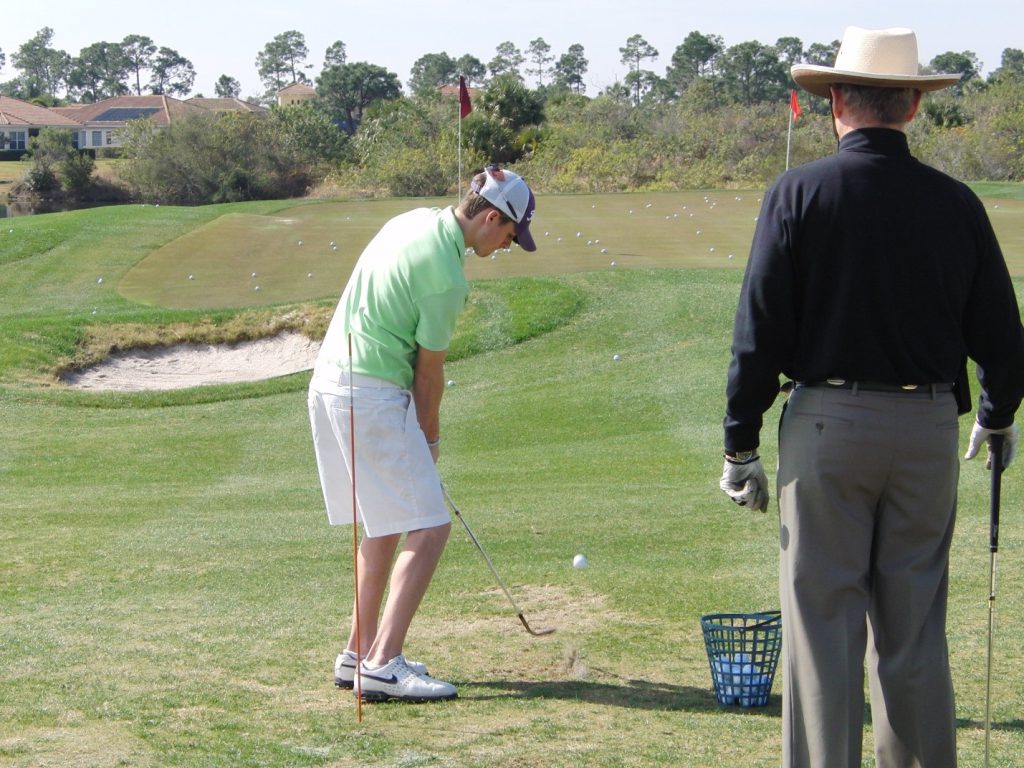Practice Failure to be a Winner

by Dr. T. J. Tomasi, Keiser University College of Golf Senior Faculty and Director of Research
If you are a golfer and you want to teach yourself to play better golf, you need to use a correct practice routine to guide your development, a routine in which failure is a harbinger of success. This involves using an optimum challenge point (OCP) at each step — a challenge that’s just hard enough to push you to a new level of accomplishment but just easy enough to keep you confident. Most golfers and their coaches are trapped in a learning–performance paradox caused by using incorrect challenge points. To repeat: The key point here is that you cannot determine how much or how well you are learning simply by analyzing the results of your practice sessions. And if you can’t take your learning from the practice area to the golf course, it isn’t much good for you.
Learn from failure
Failure can signal you are not learning effectively on the practice tee, but the absence of failure in a practice session can also often mean that your performance excellence in practice won’t hold up on the golf course. You can tell that you are trapped in this Learning Paradox (failure is good) when you hit the ball well on the range, but poorly on the course, a problem that affects even great players such as Tiger Woods, who called himself “Ranger Rick” when he was trying to change his swing. Tiger knew that the key to solving the paradox is to structure your learning sessions around using the optimal challenge point concept as you progress.
About OCP
When your OCP is correct, you’ll fail in practice about 30 percent of the time. For example, if your task is hitting your driver in the fairway a minimum of 250 yards, then out of 10 drives, seven must meet the standard. This failure rate either drops (gets better) or maintains in competition or other important, stress-filled contexts. A signal that your OCP is too low occurs when you succeed in practice but fail in stressful contexts. The OCP is too high if you fail in both practice and actual play.
In our example, it depends on how narrow your “fairway” is on the practice range. If it’s wide open, then 7 out of 10 isn’t good enough when the on-course fairway averages 30 yards in width. In this instance, the stats that produce 7 of 10 won’t carry over on a real course, so you’ll get incorrect feedback about your driving skill. A few years ago, I had a chat with tennis champion Ivan Lendl about his preparation for major tennis tournaments, and it was, to say the least, illuminating. Although he didn’t use the terminology, it was clear he understood OCP.
He structured his key practice sessions against two opponents at the same time in the opposite court, one with a great forehand and the other with an exceptional backhand. He might fail to win the practice matches, but the real match against just one opponent on game day seemed easy. Thus, appropriate failure during practice yields success when it really counts — during times of stress.
Challenge Yourself
Optimal Challenge Points are unique to each player and slide up and down as the context, and the challenge tasks change. Keep the following points in mind as you work to incorporate OCPs into your learning sessions:
- Adjust your feedback. Whatever the feedback, it should change as you get better at the task. Initially, the feedback is constant (e.g., watch video after every swing), but as you improve, the feedback switches to intermittent (every 5th swing).
- Adjust task complexity. In the early stages of learning the task, information should be absorbed in small units to allow efficient processing. Trying to learn large units too soon in the learning process will overwhelm you. In later stages of learning, several tasks can be linked. Thus, the practice challenge changes from simple to complex as the learner changes.
- Adjust the contextual interference. Contextual interference results from practicing a variety of tasks within a single practice situation (a mixed practice session) as opposed to working on one task per session (a blocked session). If you are a novice, use blocked practice —for example, practice just the grip using a 6-iron — then as you become more skilled, switch to mixed practice sessions — hit the driver with the new grip, then the 6-iron, then a wedge.
- Adjust the consequence. Here you manipulate the psychological content of your practice session as opposed to the physical aspects of the task. Consequence is defined as the cost or benefit of completing the task. Say you have learned how to hit a high lob, so you challenge a friend to a contest — closest high lob to the pin out of 10 for a dollar.
Golf is one of the most “out of control” sports, requiring mastery of a set of unruly skills that appear to recognize no master. But some golfers have brought this unruliness to heel, and they are most often the players who use OCP to intervene and establish control.

This young player is not aiming at the flag; he’s practicing ball control by landing his shot in a predetermined spot that he announces before he swings. Each segment is made up of units of 10 shots – his goal is at least 7 out of 10. After 3 segments, we change our position.
If you’d like to study with Dr. Tomasi and other PGA Master Professionals, contact The College of Golf today.














